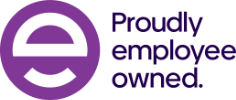Coronavirus has encouraged (or forced) us to change our natural approach to many occasions, in particular for us; interviewing. Over the last 3 months we have seen a great deal of change and adapted accordingly; working from home, virtual drinks, online exercise classes, and baking focused Instagram stories have become much more of a ‘thing’.
As we move out of lockdown, with caution, there are still many more things to adapt to as we come into the ‘new normal’. Indeed, we have previously focused two of our blogs on Remote working after Covid-19 and A Successful Recruitment Experience During Covid-19 (this was a 360 virtual recruitment experience). One of the most prominent shifts we expect to see is a move towards virtual interviewing. So…how can we make the transition to navigating the preparation and delivery of a successful virtual interview – when naturally we are all attuned/ used to that initial face to face first impression?
We have put out heads together and developed our top tips on the Virtual Interview…
- You never get a second chance to make a first impression…
In a virtual interview, you’ve got control of what the interviewer sees – so use it to your advantage.
Your visual background is particularly helpful in giving some clues about your personality, so make sure your background is reflective of this, what do you want to portray? With this in mind remember to keep it professional and simple! For example: make sure there isn’t a plant growing out of your head!
Lighting is another important element of the virtual interview, we need to allow people to really see our facial expressions and warmth. The light needs to come from the side not from above. If you have overhead lighting it will just bleed you out even more and create all sorts of shadows.
2. Styling Tips…
Now that we have the lighting and background taken care of, consider how you are framing yourself. Ordinarily, we would see somebody’s whole body and we’re able to make a natural instant impression. You want to allow people to see the whole of the top part of your body, not just the neck and the head. This is really important because we use our body language a lot in everyday life and therefore if someone can only see your neck and your head, we don’t allow people to see our hands.
When dressing for your interview, consider the below…
1. Necklines: Soft v necks to elongate
2. Colour: Stay safe in an array of blues/ teals/ aquas. Or embrace simple patterns.
3. Fabric: Be cautious of sweat patches. Wear a fabric that glides rather than clings. If in doubt wear a jacket.
4. Accessories: Pendants to elongate, or bold statement necklaces that sit against a simple (round) neckline and fabric at the neatest point. Remembering that you don’t want this to be a distraction, make sure your hair is neat and again does not distract from your discussion.
5. Make-Up: Eyes! If you do nothing else then get your eyebrows perfected and apply a lick of mascara.
In our recent webinar, our guest speaker Ginnie-Chadwyck-Healey (Sunday Telegraph columnist and fashion presenter) shares her top 5 style tips to consider for virtual interviews. Here is the video:
3. The interview…
You have the power to control the environment, give yourself some time before the interview to get into the right mindset, ensure the location is quiet and that you have tested the tech.
Answering questions: STAR (Situation Task Action Result) using this technique at its best is invisible to the listener and comes across as a well-articulated answer.
Engage with your interviewer: Answering any questions clearly and precisely whilst keeping answers succinct and to the point, whilst describing in a positive, engaging way will keep your interviewer listening and you more memorable.
Building Rapport: Throughout all of this, building rapport is a key element of a successful interview too. Creating professional rapport is going to be harder on line but there are a few ways you can help this along.
- Research! Do your homework, research the organisation, role and interviewer. If you are well-prepped dialogue will flow more naturally.
- NLP: engage with your interviewers' body language and eye contact - listen to what they are saying, do not copy them but engage with what they are giving to you. Hands are a really important communication tool, even virtually, because it allows us to signal things like being decisive and assertive through hand gestures.
Ultimately don’t forget that while trying to build rapport in an interview you’re actually there to prove you can do the job too. Make sure to demonstrate your relevant skills and experience, banter alone rarely gets someone a job.





